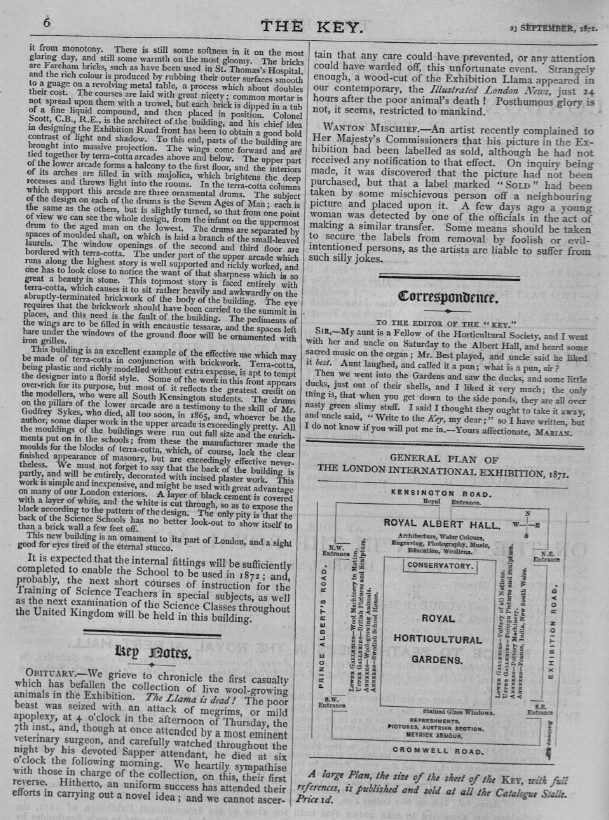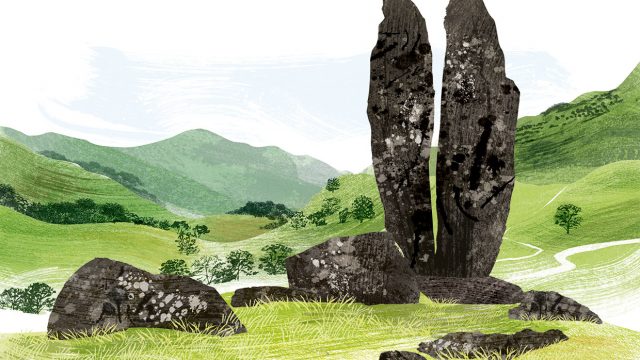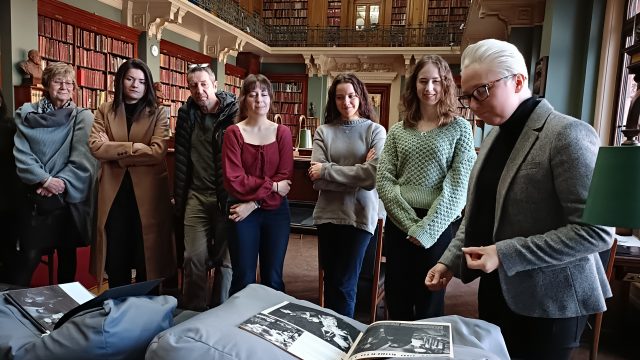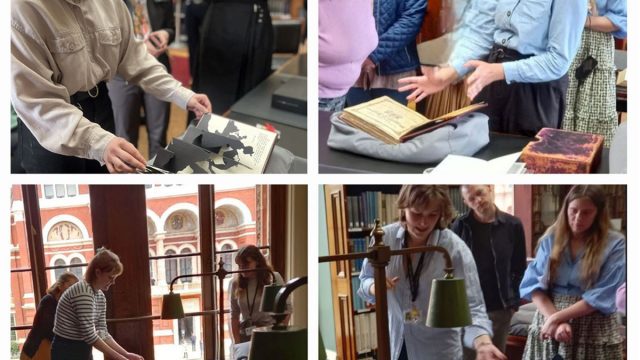This is the second post by guest blogger Beatrice Ashton-Lelliott. Beatrice is on a student placement in the National Art Library from the Royal Holloway MA in Victorian Studies.
Following on from my post about advertisements in the guidebooks and catalogues of the exhibitions, I’ll now highlight a few of the stranger incidents which took place and were reported on mainly by periodicals and privately issued pamphlets.
The coverage of these exhibitions was not without humour, particularly in the many arguments which ensued over patenting rights. Louise Purbrick’s 1997 article describes the fear of intellectual property theft at the Great Exhibition of 1851 (1), and such scandals seem to have been present in later exhibitions as well. Items such as the ‘Analysis of the evidence and reports on the Vienna Scandal’ (2) in 1873 are listed on Adam Matthews’ World’s Fairs database and present some of the arguments which were being conducted in public through pamphlets and reports. They can be a thoroughly entertaining read, exemplified in the case of ‘A plain statement of facts concerning the American pianos which were NOT to be exhibited at the International Exhibition of Vienna, 1873’ (3), which details a disagreement between two American piano manufacturers and quickly escalates into a comically melodramatic tale of intrigue and betrayal.
Other sensational moments include the unfortunate death of the exhibition llama as detailed in the 23rd September 1871 edition of The Key, a periodical dedicated entirely to the reporting of the London International Exhibitions. News of the llama’s ‘posthumous glory’ sits alongside ‘wanton mischief’ being caused in the art section of the exhibition by false purchase labels, as narrated below in the Key Notes section:
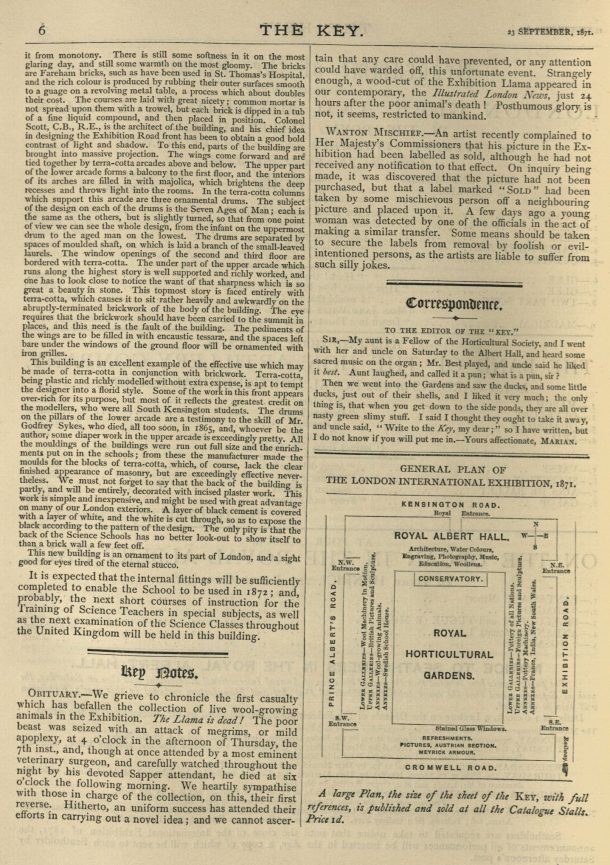
Looking at periodicals such as The Key gives a real insight into the daily goings-on of the exhibitions, as opposed to the polished veneer of the official guides. The Key details missing items, persons, scandals and what it might have been like to attend an international exhibition as a typical Victorian. This is especially important as by 1874 the larger periodicals and newspapers become sparse in their reporting of these events, with the 1874 London exhibition receiving limited coverage in papers such as The Times and The Illustrated London News. The latter describes the 1873 and 1874 exhibitions as having visitors who were ‘few and uninterested’ (4), which it blames largely on a lack of enthusiasm, inflexible opening hours and the fact that many potential visitors were unable or unwilling to pay the entrance fee. This prompted a halt in international exhibitions in Britain until the International Health Exhibition (1884) a decade later, although America held its first centennial exhibition in Philadelphia in 1876.
Undertaking this placement at the NAL has taught me a huge amount about cataloguing (including mastering microfiche readers!) and working with nineteenth-century collections. It’s been a privilege to explore such a wide variety of remarkable material, and using resources such as the V&A’s original Victorian catalogues has given me an invaluable first-hand insight into the extensive and diverse history of the museum itself, one of Britain’s most important legacies from the international exhibitions of the nineteenth-century.
- Louise Purbrick, ‘Knowledge Is Property: Looking at Exhibits and Patents in 1851’ in Oxford Art Journal 20.2 (1997), pp. 53-60.
- Thomas Brodhead Van Buren, ‘Analysis of the evidence and reports on the Vienna Scandal, 1874’. Available at the NAL through e-resource: Adam Matthew, Marlborough, World’s Fairs, http://www.worldsfairs.amdigital.co.uk/Documents/Details/HML_Pam99127 [Accessed July 26, 2016].
- A plain statement of facts concerning the American pianos which were not to be exhibited at the International Exhibition of Vienna, 1873, [1873]. Available at the NAL through e-resource: Adam Matthew, Marlborough, World’s Fairs, http://www.worldsfairs.amdigital.co.uk/Documents/Details/HML_Pam2004331 [Accessed July 26, 2016].
- “The End of the Exhibition.” Illustrated London News, 31 Oct. 1874: 427. Available through the Illustrated London News Historical Archive: http://find.galegroup.com/iln/infomark.do?&source=gale&prodId=ILN&userGroupName=rho_ttda&tabID=T003&docPage=article&docId=HN3100093511&type=multipage&contentSet=LTO&version=1.0 [accessed August 1st 2016]
